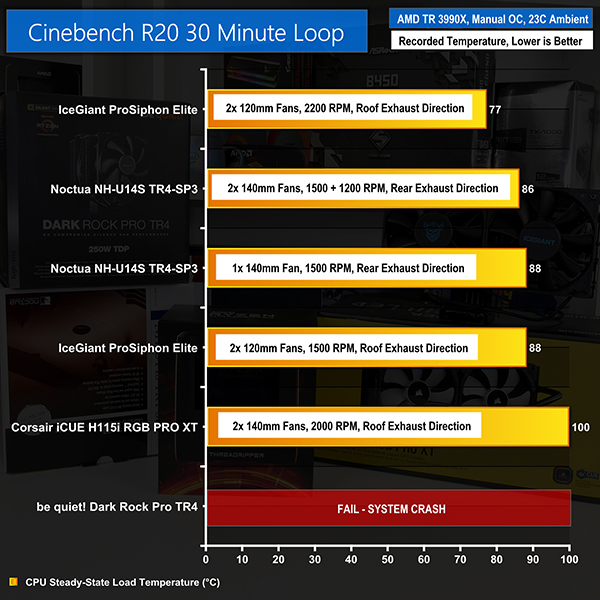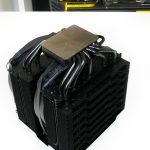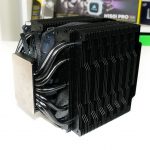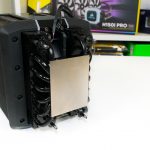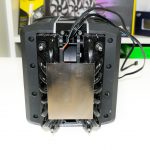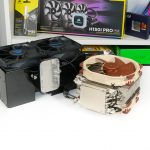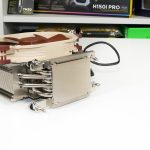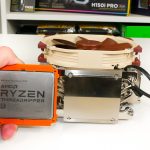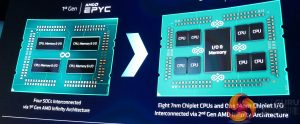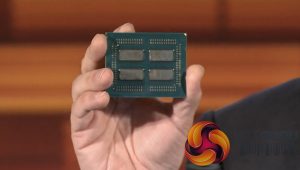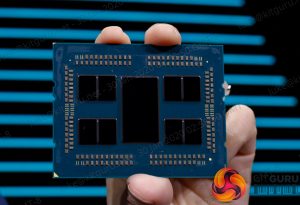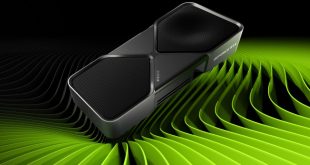So, what exactly is going on with the be quiet! Dark Rock Pro TR4 (and by extension the Cooler Master Wraith Ripper)? Surely a hefty dual-tower air cooler with sufficient heatpipe capacity and good, albeit relatively slow, fans should be closer to the Noctua U14S performance?
The quick and easy suggestion is that the heatpipes may have been saturated with such a heavy heat load. It is reasonable to think that such an occurrence could have led to inadequate cooling performance that spiralled the 3990X into thermal runaway and a system crash.
Closer examination highlights how the be quiet! Dark Rock Pro TR4 and, by a greater extent, the Wraith Ripper utilise true Threadripper-sized base plates but without Threadripper-3000 optimised heatpipe layouts. This can be seen by the angles at which the heatpipes enter the sizeable cooler base plates in an approach that is clearly centre seeking.
The implication is that both be quiet! and Cooler Master have centre-weighted their actual contact points between the heatpipes and the base plate. This, in turn, places far greater emphasis on the conduction capability of the base plate towards those centre-weighted heatpipes, in addition to effective thermal conduction across the entire Threadripper-3000 heatspreader.
By comparison, Noctua’s design uses heatpipe contact points that are more evenly spread across the Threadripper-sized base plate. In turn, this gives Noctua better coverage towards the edges of the Threadripper-3000 heatspreader and on the 3990X that is absolutely critical given the package topology. The same logic can be applied to the IceGiant cooler as its full-cover base uses a thermosiphon evaporator system rather than heatpipes.
How do we know this is the case though? Well, Leo initially presented the very smart idea of simply cutting up the CPU coolers and examining the heatpipe orientations and contact points with respect to the base plate. However, the ongoing global issues meant that access to the necessary equipment is not possible.
Instead, we analysed the HWiNFO recorded temperature data from each CCD chiplet. It is clear that there is significant variance in the temperatures between a group of four CCDs compared to a group of another four CCDs for the Cooler Master, be quiet!, and Corsair coolers. This variance did not exist to as significant an extent on the Noctua and IceGiant coolers.
What this variance in temperature tells us is that certain CCDs are not getting as preferential access to cooling, if you want to put it that way, as the other CCDs. It would be reasonable to think that the four CCDs struggling the most are the four most outwards positioned chiplets. If these chiplets struggle to move their heat across the Threadripper heatspreader (and the CPU cooler base plate), their temperatures will rise faster and will drive system instability due to overheating.
This issue is less prevalent on Threadripper 1000 and 2000 series as the two or four chiplets of those processors are more centre-weighted. Heat can conduct down the silicon of the chiplets towards the centre of the heatspreader where CPU coolers are typically biased.
That is not the case with Threadripper 3990X whereby the outermost heat-producing CCDs are not physically connected to the innermost chiplets. They therefore need to rely on the heatspreader and CPU cooler base to transfer their thermal energy across its surface area and towards the central heatpipes. Of course, the higher thermal density of the 74mm2 Zen 2 7nm chiplets is also a factor.
Put simply, a full cover baseplate that was designed with Threadripper 1000 and 2000 in mind is not necessarily well optimised for Threadripper 3990X. This is due to its vastly different chiplet topology and significant change in thermal hotspot locations. By extension, the more centralised chiplet layout for the four-CCD Threadripper 3960X and 3970X will provide different outcomes.
 KitGuru KitGuru.net – Tech News | Hardware News | Hardware Reviews | IOS | Mobile | Gaming | Graphics Cards
KitGuru KitGuru.net – Tech News | Hardware News | Hardware Reviews | IOS | Mobile | Gaming | Graphics Cards


